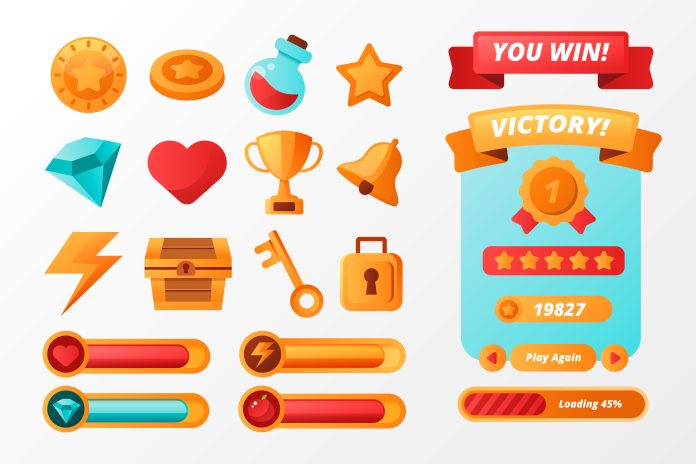
The field of video game design has evolved significantly over the years, with user experience (UX) design emerging as a crucial aspect. Game UX design focuses on creating captivating, intuitive, and enjoyable experiences for players. This article explores the concept of game UX, its importance, benefits, challenges, the role of a game UX designer, and how it contributes to the overall success of video games.
What is game UX?
Game UX, or game user experience, refers to the design and optimization of the interactive elements and mechanics within a video game to enhance the overall experience for players. It involves understanding user behavior, motivations, and preferences to create intuitive interfaces, seamless interactions, and engaging gameplay.
Why UX is important in game design
Game UX design is important for several reasons:
Player engagement: By providing an immersive and enjoyable experience, game UX design keeps players engaged and invested in the game world for longer periods. This leads to increased player retention and word-of-mouth promotion.
User satisfaction: Effective UX design ensures that players can easily understand and navigate the game mechanics, reducing frustration and enhancing overall satisfaction.
Accessibility: Game UX design allows for the inclusion of a wider range of players, including those with disabilities or varying levels of gaming experience. By considering diverse user needs, games can be made more accessible and inclusive.
Brand differentiation: Well-designed game UX can help a game stand out in a highly competitive market, attracting new players and building a loyal user base.
How UX design comes into play in video games
In the dynamic world of video game design, crafting an unforgettable player experience goes far beyond intricate graphics and captivating narratives. Game UX transforms gameplay into an interactive journey that resonates with players on a deeper level.
From interfaces to mechanics, every facet is curated to engage players deeply. Game UX design influences interactions, storytelling and player-world connections.
Interface design
UX design focuses on creating intuitive menus, HUDs (Heads-Up Displays), and control schemes that allow players to easily navigate and access game features. For example, the interface in the game ‘The Legend of Zelda: Breath of the Wild’, provides players with a minimalist HUD that displays only essential information, allowing them to fully immerse themselves in the vast open-world.
Gameplay mechanics
UX design ensures that game mechanics are easy to understand, learn, and master, enabling players to focus on the core gameplay experience. The game ‘Portal’ showcases innovative gameplay mechanics where players use a portal gun to create interdimensional portals, challenging them to think critically and solve complex puzzles.
Level and environment design
UX design influences the layout and structure of game levels and environments, guiding players’ progression and exploration. In ‘Assassin’s Creed Valhalla’, the meticulously designed Viking settlements and breathtaking landscapes of medieval England provide players with a visually stunning and immersive game world to explore.
Feedback and progression systems
UX design involves implementing clear feedback mechanisms, such as visual and audio cues, rewards, and progression systems, to motivate and engage players. The Super Mario series is a great example of effective feedback and progression systems. The game provides clear visual and audio cues, such as power-ups, coins, and level completion animations, to communicate player progress and achievements.
Multiplayer and social interactions
UX design addresses the seamless integration of multiplayer features, chat systems, matchmaking, and community-building aspects, fostering positive social experiences. Fortnite, for example, incorporates robust multiplayer features, including seamless matchmaking, voice chat, and cross-platform play. These elements enable players to connect with friends and engage in competitive or cooperative gameplay experiences.
What are the benefits of applying game UX design?
Game UX is the magic that shapes how we connect with games, making them easy to navigate, thrilling to play and hard to put down. It even influences a game’s success in the market.
Here are some clear benefits of applying game UX.
Enhanced player immersion
Well-designed UX elements, such as intuitive controls, immersive visuals, and sound design, create a more immersive experience, allowing players to be fully engrossed in the game world.
Increased player retention
By reducing barriers to entry, optimizing learning curves, and providing enjoyable experiences, game UX design promotes player retention and reduces the likelihood of players abandoning the game.
Positive player feedback
Effective UX design generates positive player feedback, leading to increased player satisfaction, higher ratings, and better reviews. This can significantly impact the game’s reputation and commercial success.
Competitive advantage
A game that prioritizes user experience gains a competitive edge in the market, attracting more players, generating higher sales, and establishing a strong brand presence.
Commercial success
Minecraft achieved tremendous commercial success by providing players with a sandbox environment, intuitive building mechanics, and a vast online community, resulting in a global player base and high sales figures. Games with exceptional UX design often gain a competitive advantage, attracting more players, generating higher sales, and establishing a strong brand presence.
Player advocacy
Positive user experiences resulting from effective game UX design lead to player advocacy, with satisfied players recommending the game to others, thereby expanding the player base and increasing its visibility. For example, the game Undertale gained a dedicated fan base and critical acclaim by offering players meaningful choices and consequences, engaging storytelling, and memorable characters. The positive player experiences led to extensive word-of-mouth promotion and a strong community of advocates.
What are the main challenges of game UX design?
Game UX designers face the challenge of creating gameplay mechanics that are both engaging and easy to understand, striking the right balance between complexity and simplicity.
Another significant challenge is designing for a wide range of player demographics, skill levels and preferences. Game UX designers must ensure that their designs accommodate various user needs and preferences, including accessibility considerations. The game “The Last of Us Part II” implemented various accessibility options, such as customizable controls, visual aids, and audio cues, catering to players with different abilities and ensuring an inclusive experience.
On top of that, the gaming industry is constantly evolving, and players have high expectations for immersive experiences. Meeting and exceeding these expectations can be a challenge for game UX designers.
Game UX design requires continuous iteration and testing to refine and improve the user experience. This iterative process can be time-consuming and resource-intensive.
Additionally, game UX designers often have to work within technical constraints, such as limited processing power or platform-specific limitations, which can impact the implementation of certain design ideas.
What is the role of a game UX designer?
A game UX designer is responsible for designing and optimizing the user experience throughout the game development process. They collaborate closely with various professionals, including game designers, artists, programmers and testers.
On top of mastering UX design principles (including information architecture, interaction and visual design) Game UX designers need to have a strong understanding of players’ psychology and behavior, mostly through conducting user research and analyzing players feedback.
Based on these findings, they then need to design and optimize gameplay mechanics to ensure a smooth and satisfying experience.
They are also responsible for implementing feedback systems, rewards and progression mechanisms to engage players.
Finally, game UX designers need to work together with programmers and artists to ensure creation of visually appealing game worlds and seamless integration of UX design elements in the game.
Summary
Game UX design plays a major role in creating immersive, engaging, and enjoyable experiences for players. By focusing on user needs, preferences and behavior, game UX designers contribute to player engagement, satisfaction, and the overall success of video games. The challenges they face are overcome through iterative design processes, collaboration with cross-functional teams and a deep understanding of player psychology. As the gaming industry continues to evolve, game UX design will remain a critical component in shaping the future of interactive entertainment.
To maximize the engagement and retention levels of your site or app visitors and improve their user experience, we recommend that you check our inventory of the best UX agencies from around the world. You can also learn more on how to choose a good UX design agency and what are the most important questions you should ask before hiring a UX agency.







































